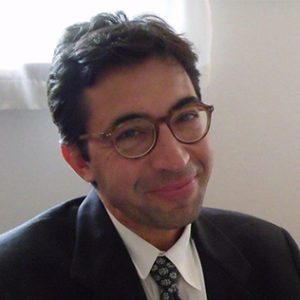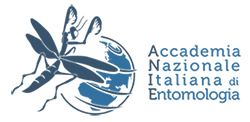
Francesco Nazzi
francesco.nazzi@uniud.it
BIOGRAFIA
Presso lo stesso Ateneo ha svolto attività di ricerca post-dottorale ed è stato infine impiegato come ricercatore. Dal 2015 è professore associato ed insegna “Zoologia” e “Apidologia e Apicoltura”.
È stato Marie Curie fellow presso Rothamsted Experimental Station e visiting scientist presso prestigiose Università britanniche.
Ha svolto studi sulla comunicazione chimica in vari artropodi di interesse agrario, contribuendo all’identificazione di diversi semiochimici. Da quasi trent’anni si occupa dello studio delle api domestiche e dei loro problemi di salute. Inizialmente si è occupato delle interazioni chimiche tra l’ape ed il suo principale parassita: l’acaro Varroa destructor. Più recentemente si è dedicato allo studio di come vari fattori di stress, tra cui parassiti, insetticidi e problemi nutrizionali, interagendo fra di loro possono determinare il collasso delle colonie d’api.
È autore di una cinquantina di pubblicazioni scientifiche internazionali, alcune delle quali classificate come highly cited papers, e molti altri contributi sugli argomenti oggetto delle sue ricerche.
Dal 2015 al 2019 è stato Delegato del Rettore per la Cultura dell’Università di Udine. È attualmente direttore scientifico del Laboratorio Apistico Regionali della Regione Friuli Venezia Giulia.
Una pubblicazione di cui è coautore ha ricevuto il Cozzarelli prize dell’Accademia delle Scienze degli Stati Uniti.
Nazzi F., Powell W., Wadhams L.J., Woodcock C.M. (1996) – Sex pheromone of aphid parasitoid Praon volucre (Hymenoptera, Braconidae). Journal of Chemical Ecology, 22: 1169-1175.
Nazzi F., Bortolomeazzi R., Della Vedova G., Del Piccolo F., Annoscia D., Milani N. (2009) – Octanoic acid confers to royal jelly varroa-repellent properties. Naturwissenschaften, 96: 309-314.
Nazzi F., Brown S.P., Annoscia D., Del Piccolo F., Di Prisco G., Varricchio P., Della Vedova G., Cattonaro F., Caprio E., Pennacchio F. (2012) – Synergistic parasite-pathogen interactions mediated by host immunity can drive the collapse of honeybee colonies. PLoS Pathog 8(6): e1002735.
Nazzi F., Le Conte Y. (2016) – Ecology of Varroa destructor the major ectoparasite of the western honey bee Apis mellifera. Annual Review of Entomology, 61: 417-432.
Annoscia D., Brown S.P., Di Prisco G., De Paoli E., Del Fabbro S., Frizzera D., Zanni V., Galbraith D.A., Caprio E., Grozinger C.M., Pennacchio F., Nazzi F. (2019) – Haemolymph removal by Varroa mite destabilizes the dynamical interaction between immune effectors and virus in bees, as predicted by Volterra’s model. Proc. R. Soc. B 286: 20190331.
After working as a post-doc and researcher, he was appointed as associate professor of Entomology by the University of Udine where he currently teaches “Zoologia” and “Apidologia e Apicoltura”. He was also Marie Curie fellow by Rothamsted Experimental Station and visiting scientist by some british Universities.
Francesco Nazzi has carried out studies on the chemical communication of various arthropods of agricultural interest, contributing to the identification of several semiochemicals. For almost thirty years he has been studying the honey bee and its health problems. Initially he dealt with the chemical interactions between the bee and its major ectoparasite: the mite Varroa destructor. More recently he has been involved in studies aiming at elucidating how various stressors, including parasites, insecticides and nutritional problems, interact with each other to cause the collapse of honey bee colonies.
He is the author of about fifty international scientific publications, some of which are classified as highly cited articles, and many other contributions on the subjects of his research.
From 2015 to 2019 he was the delegate of the Rector of the University of Udine for culture.
He is the director of the reference laboratory for apiculture of the Region Friuli Venezia Giulia.
One of his publications was awarded the Cozzarelli prize of the National Academy of Sciences of the USA.
Nazzi F., Powell W., Wadhams L.J., Woodcock C.M. (1996) – Sex pheromone of aphid parasitoid Praon volucre (Hymenoptera, Braconidae). Journal of Chemical Ecology, 22: 1169-1175.
Nazzi F., Bortolomeazzi R., Della Vedova G., Del Piccolo F., Annoscia D., Milani N. (2009) – Octanoic acid confers to royal jelly varroa-repellent properties. Naturwissenschaften, 96: 309-314.
Nazzi F., Brown S.P., Annoscia D., Del Piccolo F., Di Prisco G., Varricchio P., Della Vedova G., Cattonaro F., Caprio E., Pennacchio F. (2012) – Synergistic parasite-pathogen interactions mediated by host immunity can drive the collapse of honeybee colonies. PLoS Pathog 8(6): e1002735.
Nazzi F., Le Conte Y. (2016) – Ecology of Varroa destructor the major ectoparasite of the western honey bee Apis mellifera. Annual Review of Entomology, 61: 417-432.
Annoscia D., Brown S.P., Di Prisco G., De Paoli E., Del Fabbro S., Frizzera D., Zanni V., Galbraith D.A., Caprio E., Grozinger C.M., Pennacchio F., Nazzi F. (2019) – Haemolymph removal by Varroa mite destabilizes the dynamical interaction between immune effectors and virus in bees, as predicted by Volterra’s model. Proc. R. Soc. B 286: 20190331.
